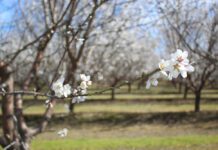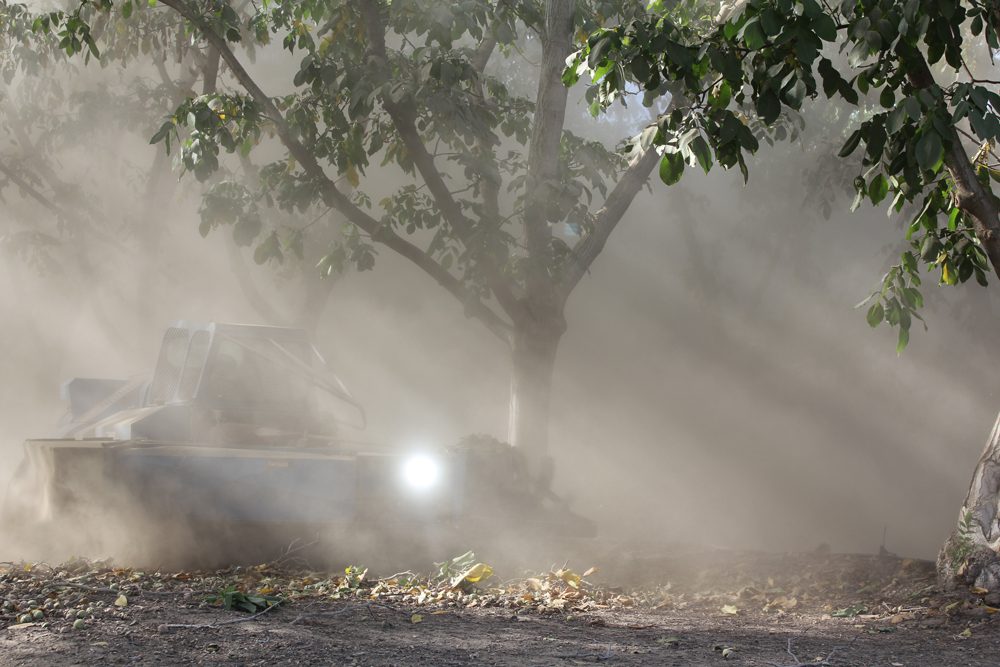
Depending on the California growing region, walnut harvest 2022 is at least several months down the road. Does that mean it is too early in the year for growers to start thinking about practices that can promote quality in their next walnut crop?
Growers and UC farm advisors say no. Standard orchard practices in the winter not only promote tree health, but they can play a role in maximizing crop quality and value. High yields are always welcome, but crop quality, including kernel size, weight and color, can be influenced by orchard sanitation, soil health, removal of dead wood from the orchard, meeting tree water demand and weed control.
“It’s pretty clear the farmer’s job doesn’t end at harvest,” said Ryan Fillmore, Sacramento Valley walnut grower. “It just enters a different phase.”
“Quality of nuts is more about tree susceptibility and stress,” said Jhalendra Rijal, UCCE area integrated pest management specialist in Stanislaus and San Joaquin counties. “Tree health affects nut quality.”
Orchard Sanitation
If insect pressure in the orchard has dramatically affected crop quality, winter sanitation is paramount, Fillmore said. Navel orangeworm winter survival can be high in walnut orchards. Nuts on the ground and on the trees provide overwintering sites for NOW, a pest that can quickly build populations early in the year. Infestations at harvest can cause physical and cosmetic damage to walnut kernels.
Rijal noted that the spread of NOW in nut crops began with walnuts.
Mummy nut removal from the orchard in the winter months is critical to keeping NOW levels low early in the season. Shaking or poling trees to remove all mummy nuts can be done any time after harvest. Wet and muddy conditions can keep growers from completing this practice later in the year, but the effort will pay off in less NOW damage at harvest, Rijal said. Orchard sanitation is not a one-year deal, he stressed.
That part of the NOW management plan needs to occur every year.
“Keeping the orchard clean is always an important part of a strategy to keep NOW levels low,” Rijal said.
Dormant season is also time for monitoring for different species of scale to determine population levels as well as predator levels.
Winter Pruning, Removing Infected Wood
This winter orchard practice comes with a strong warning: ”Don’t prune when rain is forecast.” Luke Milliron, UCCE orchard systems advisor in Butte, Glenn and Tehama counties, said studies have shown a much higher Botryosphaeria infection rate in walnut trees pruned prior to a rain event.
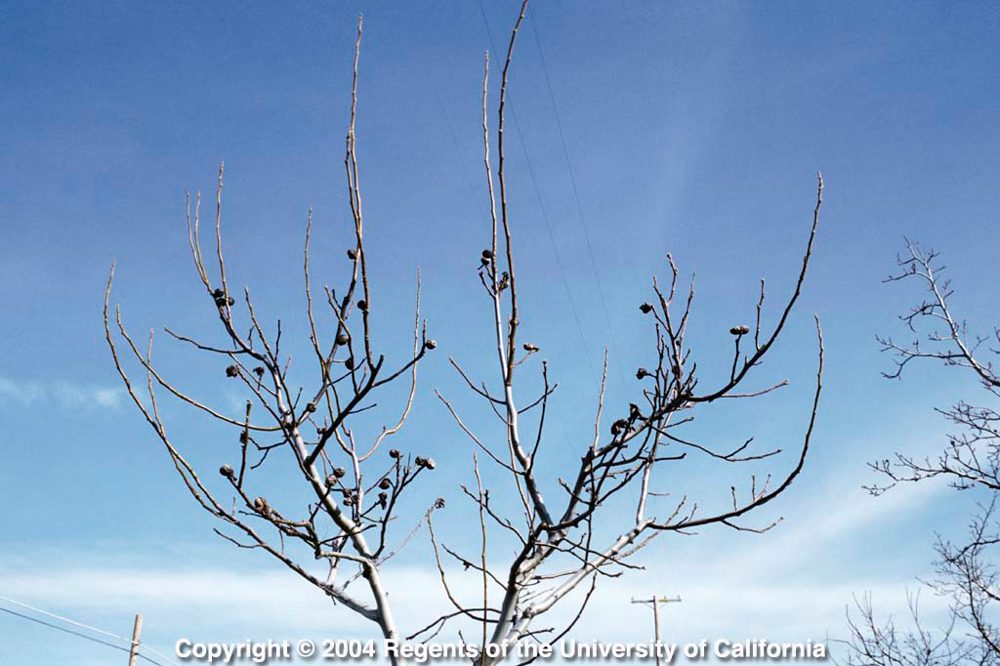
Walnut Botryosphaeria is a fungal disease that leads to dieback in shoots and fruiting buds and an overall decline in tree health. Walnut tree pruning wounds, Milliron said, remain vulnerable to infection for weeks compared to pruning wounds in other tree nuts that heal at a faster rate and are susceptible to infection for a shorter time. Warmer spring temperatures are also conducive to fungal infections in trees.
Pruning is a timing issue, Fillmore said, and it depends on what a grower is trying to accomplish in the orchard. Removing dead branches and dead or dying trees removes infection sources, but pruning or hedging operations can open up wounds, leaving them vulnerable to infections. Fungicide applications may be necessary, but Milliron noted that growers should use efficacy tables to determine the best product and also to rotate chemistries to avoid resistance. Fillmore also noted that orchard activity during wet conditions can increase soil compaction.
Applying Soil Amendments
Winter can be an optimum time to apply soil amendments, trace minerals and even compost as rain can move these down through the soil into the root zone where they can be taken up. Replacing the nutrients that have been removed at harvest helps avoid deficiencies in the next crop. Fillmore said if kernel fill, color or taste are issues in this year’s crop, making sure the correct minerals and micronutrients are present may be important to next year’s crop quality.
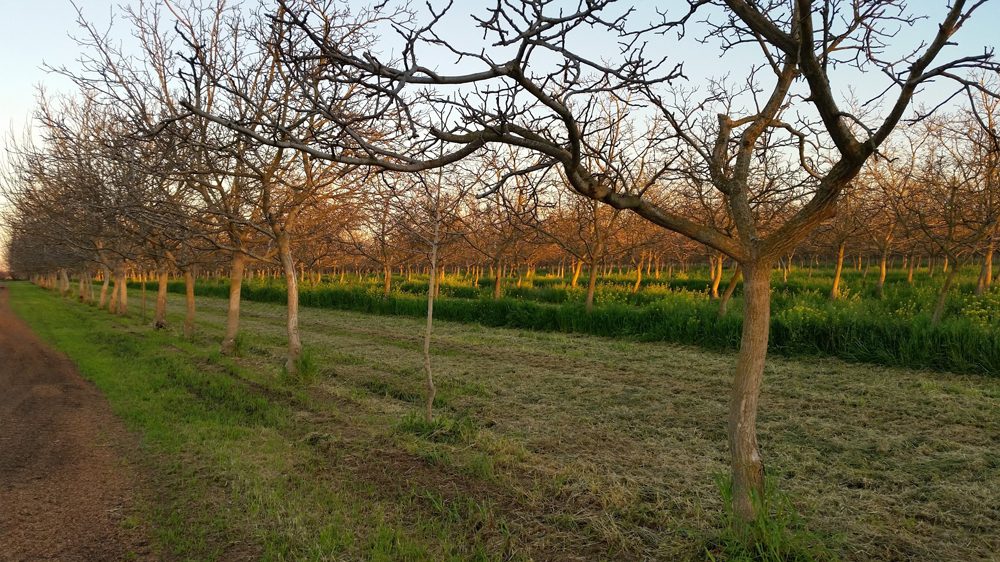
Soil tests may be appropriate, but calculation on soil needs can be done based on crop removal. The UCCE publication Sac Valley Orchards reports that growers should consider applying either potassium sulfate or potassium chloride (KCl) if a leaf sample analysis indicates potassium deficiency. If using KCl, the chloride must be able to leach out of the root zone before spring leaf out. It should be avoided in heavy clay soils with less than 8 inches of winter rainfall.
Postharvest or Pre-Bloom Irrigation
This activity is dependent on winter rainfall and the growing region.
Sac Valley Orchards reports that a reasonable strategy is to substitute irrigation for the shortage in rainfall on roughly a monthly basis beginning in December until enough rainfall has been received in combination with irrigation to refill the soil profile five feet deep. Full winter soil moisture helps to warm soil, promoting root growth and aeration to avoid root diseases. Rainfall should be tracked along with irrigation water applied, with an eye on rain in the forecast.
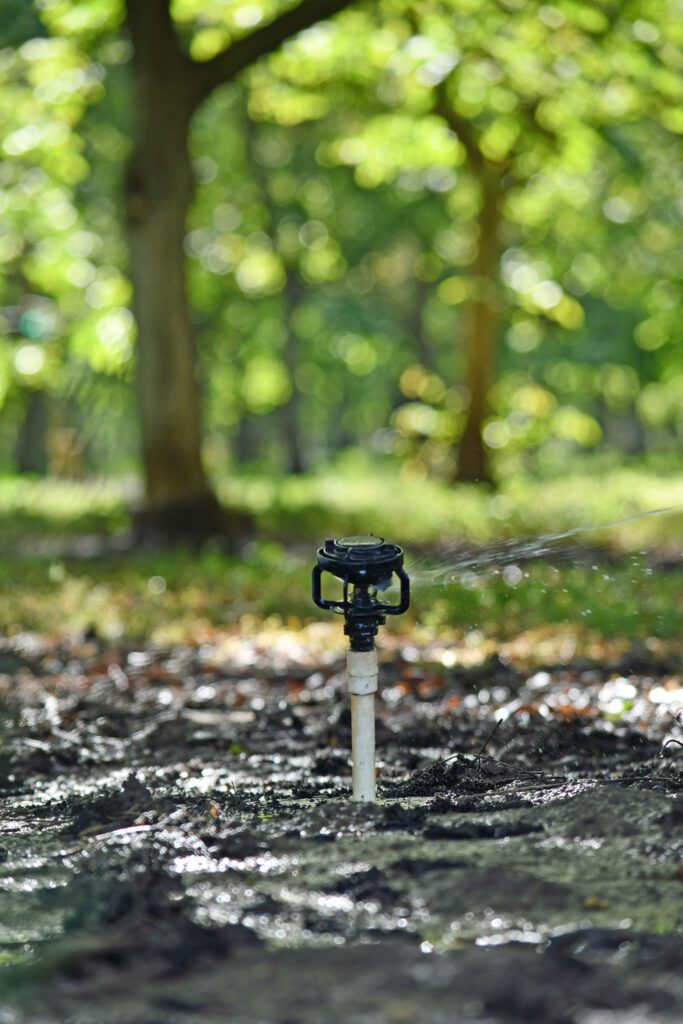
“Walnut trees need water to stay healthy,” Fillmore said. “It is like running a marathon when you are dehydrated.” A filled soil profile also helps mitigate freezing temperatures.
Preemergent Herbicide Applications
Weed control is another cultural practice that enhances orchard health. Healthy orchards, Fillmore said, maximize production per acre. Weeds can rob trees of nutrients and water, factors that influence crop quality.
Preemergent herbicides control weed seedlings as they germinate, halting the development of seedling shoots and roots, ultimately preventing emergence. These herbicides can provide residual control throughout the year if properly timed and applied. Applications can be made once in the winter or early spring.
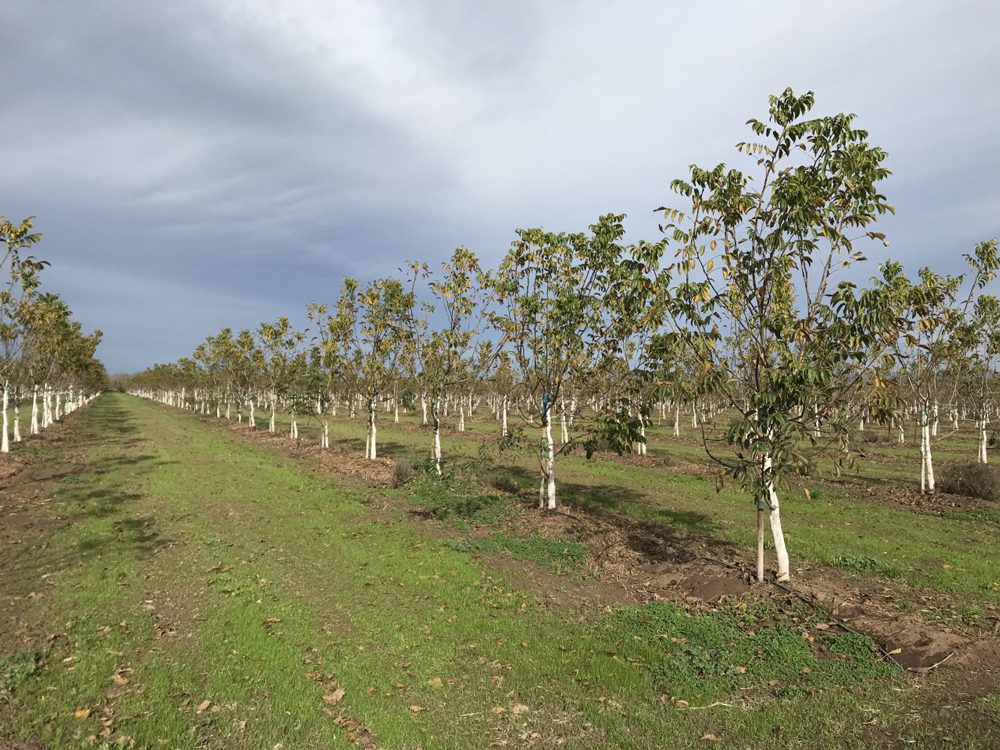
Applications of preemergent herbicides are most effective if orchard debris is blown off the berms to allow for better soil contact and if soil is moist.
Identification of weed species and knowing their pattern of germination and seed production can assist with control decisions.

Cecilia Parsons
Cecilia Parsons has lived in the Central Valley community of Ducor since 1976, covering agriculture for numerous agricultural publications over the years. She has found and nurtured many wonderful and helpful contacts in the ag community, including the UCCE advisors, allowing for news coverage that focuses on the basics of food production.
She is always on the search for new ag topics that can help growers and processors in the San Joaquin Valley improve their bottom line.
In her free time, Cecilia rides her horse, Holly in ranch versatility shows and raises registered Shetland sheep which she exhibits at county and state fairs during the summer.







